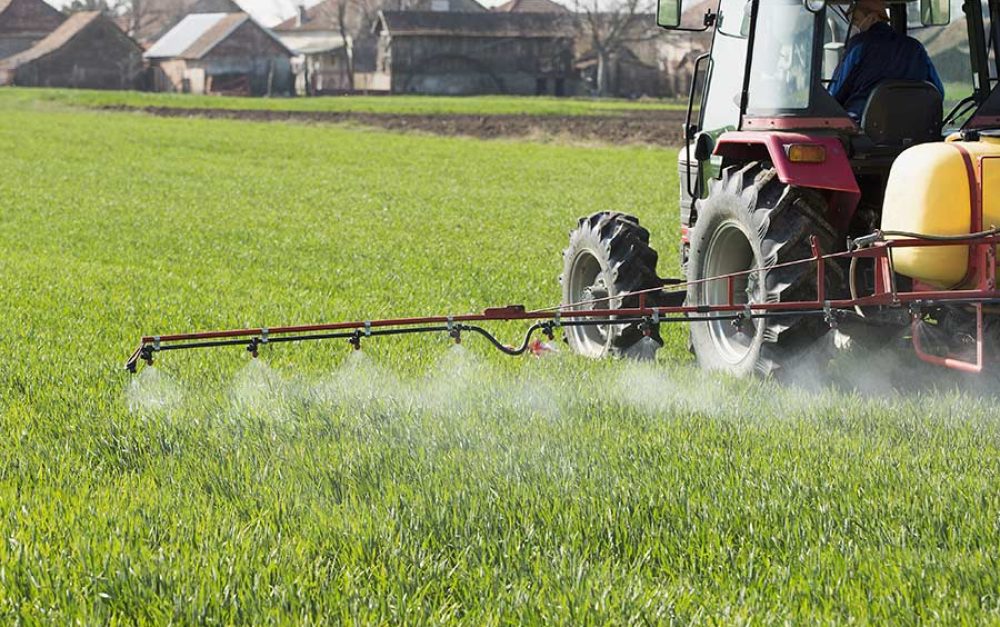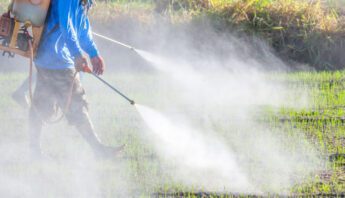Monsanto’s herbicide glyphosate is once again in the spotlight. Cancer experts will be reviewing the science on glyphosate for the Environmental Protection Agency (EPA) later in 2016, at a meeting that was recently postponed from its original October date. This week, PAN International released a review of the current science on the herbicide’s health and environmental effects.
And glyphosate will be a key item on the agenda of this weekend’s Monsanto tribunal, an event in The Hague convened by non-governmental organizations to put the mega-corporation on trial for human rights abuses.
Glyphosate, the active ingredient in Monsanto’s ubiquitous pesticide formulation RoundUp, is increasingly controversial due to its widespread use and growing questions over human health risks. The World Health Organization’s specialized cancer group known as the International Agency for Research on Cancer (IARC) reviewed scientific evidence in 2014 and determined that glyphosate was a “probable carcinogen.”
Monsanto has not been too happy about this IARC determination, and unsurprisingly asked IARC to withdraw the report on glyphosate. Last month, they began pressuring Congress to roll back U.S. financial support for the agency as well.
The science keeps getting stronger
Glyphosate’s usage on U.S. farms has ramped up on the order of hundreds of millions of pounds per year due to its use in crops genetically engineered to be resistant to the herbicide. EPA’s Office of Pesticide Programs (OPP) reviews and re-registers pesticides that are on the market approximately every 15 years; glyphosate’s overdue review is now up, and the chemical is winding its way through EPA’s process.
Many recent studies have explored glyphosate’s link to human health effects, and these will be included in the review. Much of this research is gathered in PAN International’s new state of the science review, which includes summaries of dozens of studies on the adverse effects of glyphosate on both health and the environment.
The PAN International document cites evidence of links to adverse effects such as acute poisoning, kidney and liver damage and cancer. The review also includes information on regulatory status in several countries, and information about viable alternatives to glyphosate. As PAN Aotearoa New Zealand scientist and lead author Dr. Meriel Watts states:
The time has come for global recognition of the widespread harm caused to people and the environment from the constant use of glyphosate. For too long regulators have ignored the mounting evidence of damage, hiding behind unpublished studies by Monsanto, which not surprisingly paint a picture of a benign chemical startlingly at odds with reality.”
Baby steps to transparency
Back to EPA’s re-registration process, and next week’s review of the carcinogenicity evidence by an independent Scientific Advisory Panel, or SAP.
The SAP will take a look at new studies, submissions to the docket and an EPA issue paper, and will then make recommendations to the agency based on their findings. In the issue paper, EPA explains their system of ratings for epidemiological studies to be evaluated by the panel, and SAP members are given a set of specific questions that they need to consider and comment on.
From reading the issue paper, it looks like OPP’s conclusions are different from IARC’s. Not surprising, given the office’s track record on risk assessment. At all points where a decision could be taken either way based on the evidence reviewed, OPP’s choices are in favor of glyphosate.
The bright side: this is more transparent than other OPP documents I’ve seen, and it looks like this may be the future for OPP papers. Explanations of terminology and — most importantly — why studies were rated as high or low quality were made clear. This makes it possible for a reader to understand why and how decisions were made; this is new.
The issue paper also discusses and utilizes a process that has elements of systematic review, which EPA is trying to implement across the entire agency. This is a way to answer scientific research questions that involves an established, multi-step process — making it easier for those outside the agency to understand why decisions are taken. A single systematic review process used across the agency would be a big step toward real transparency. From what I’ve read, it looks like they aren’t quite there yet.
Yep, the process still needs lots of work
Valid points are made in EPA’s issue paper, but some discussions of the evidence are problematic.
For instance, one epidemiology study OPP reviewed indicated a plausible causal relationship between glyphosate and cancer risk for non-Hodgkin lymphoma among pesticide applicators. OPP determined that an association could not be made based on available data. IARC, on the other hand, reviewed evidence like this study and concluded there was “limited evidence.” The difference? IARC does not completely set aside an association, noting that while evidence is limited, the likelihood that the increased cancer risk observed is occurring randomly is unlikely.
Needless to say, I prefer the IARC conclusion. It reflects a position based on the evidence and is more appropriately protective of human health, given what is known.
Yet another problem? Our regulatory agencies are still looking at one chemical at a time when they assess risk, even though we know that this isn’t how farmers, applicators or the public are exposed. For example, the practice of “tank-mixing” multiple pesticide formulations used on glyphosate-resistant weeds is widespread, often resulting in exposure to multiple pesticides at the same time.
EPA does have a cumulative risk framework, but this issue sorely needs to be addressed. A recent UCLA study documented that in some cases, exposure to multiple pesticides does in fact increase cancer risk.
In the end, the actual influence the SAP will have on EPA’s decisionmaking is unclear. A 2014 article by academic researchers who have served on SAPs pointed out that multiple panels (they used atrazine as an example) have made recommendations that were not accepted by EPA — for reasons that have never been made clear. So even if the SAP makes strong recommendations to EPA, we don’t know what impact it will have.
But for now, we’re doing our best to influence the process and we welcome others to join us. To view or send comments to next week’s Scientific Advisory Panel, visit EPA’s SAP docket before October 17.








